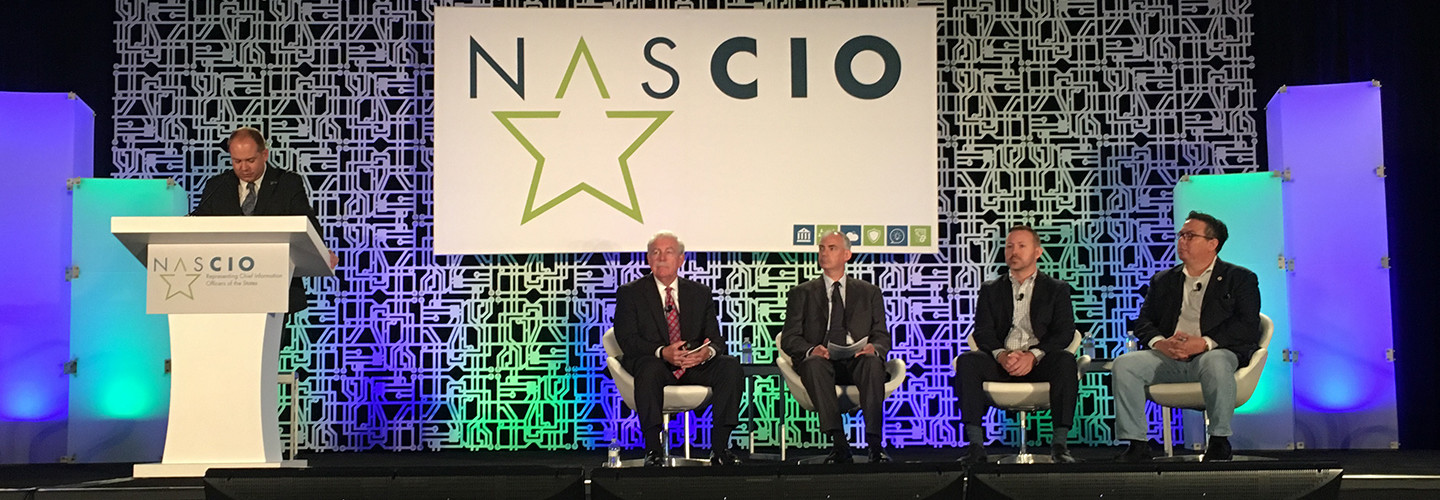NASCIO 2016: State CIOs Choose the Right IT Solution for the Right Time
While it’s true that there are many things states can learn from one another, the idea of a one-size-fits-all model is a nonstarter in a business environment that requires agility, adaptability and control.
In its 2016 annual survey, “The Adaptable State CIO,” the National Association of State Chief Information Officers (NASCIO) along with Grant Thornton and CompTIA, revealed that state leaders are grappling with this dilemma: how much of their IT infrastructure they should own and how much should they outsource at all levels. And there’s no correct answer that cuts across the board, according to the data.
For example, the percentage of CIOs that said they own and operate a consolidated data center was 68 percent, four percentage points higher than last year and 13 percentage points higher than the 2010 survey. However, the percentage of state CIOs that use a managed-services model for some or all IT operations was 63 percent this year, compared with 55 percent last year and 50 percent in 2010.
These results seem to indicate that there is a simultaneous shift toward managed services for some IT, and an uptick in the use of owned and operated IT infrastructure.
How could that be? The secret lies in the fact that certain areas of IT are being outsourced at a rapid clip. For example, in the survey, 91 percent of respondents were either done, were planning or were in the midst of migrating their email and collaboration systems to the cloud. And when it came to public vs. private vs. hybrid, there were marked increases in use of private (51 percent compared to 46 percent in 2015) and public cloud models (25 percent compared to 15 percent in 2015), and a notable drop in hybrid (16 percent compared to 28 percent in 2015).
The choice in front of state CIOs is whether to act as a provider or a broker of IT services. And the role they might take on depends on the unique needs of their users and their state’s environment.
“The shift there in mentality to become that broker is that they’re really orchestrating different services, regardless of who owns and operates them,” said Leah Lewis, a director in the U.S. public sector division of Cisco Systems and former Colorado CIO. “Some of the services, and rightly so, they might choose to have those in that provider mode where it’s on-premises and being controlled and operated by state employees.”
Doing What You Do Best and Letting Others Worry About the Rest
While reviewing the results of the survey at this week’s NASCIO Annual Conference in Orlando, Fla., Arizona CIO Morgan Reed made his opinion of managed vs. non-managed IT services plain and to the point.
“We are spending this year focusing on what we do well, and focusing on what we should divest ourselves of,” said Reed.
He’s a big fan of operating as a broker and would prefer that his state’s agencies come to the Arizona Strategic Enterprise Technology Office to put forth the need, conduct a strategic assessment, identify an appropriate solution and reasonable price points. Recently, his department achieved success when it was able to convince multiple agencies to pool their resources together for an e-licensing platform, which reduced redundancy and complexity and ensured a level of standardization.
This shift in role from IT provider to IT broker also comes with an impetus to transform the perception of the CIO and the IT department.
“To a certain degree, as a CIO, it’s about delivering value and moving away from the perception of being an expense as opposed to an investment,” said David Garcia, Maryland’s secretary of information technology.
As a former state CIO, Lewis recognizes that many CIOs are juggling as many balls as they can in this new IT landscape: Cloud, mobility, data analytics, the Internet of Things and other disruptive technologies continue to transform what is considered business as usual.
“I believe the CIOs have done a good job of educating those different lines of businesses, and elevating it out of the backroom and into the boardroom,” said Lewis. “[The survey] reminded me very quickly of how hard it is to have that job as the state CIO. They are the unsung heroes of state government.”
For more on Lewis’s thoughts on the NASCIO 2016 State CIO Survey, watch her interview and visit our NASCIO 2016 event page for more coverage from the show.








